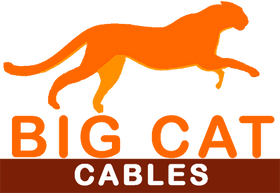HDMI Fiber Hybrid Cables are a new, top-of-the-line option for connecting HDMI devices. Using fiber optics technology instead of traditional copper, fiber optic HDMI goes above and beyond the limitations of standard HDMI cables.
Conventional HDMI is made using copper, with multiple smaller copper lines inside the main cable. The main drawback of conventional HDMI is the distance limit. Plain old HDMI caps out at a maximum limit of 65 feet, although depending on the equipment being used, the quality of the cables, and similar factors, issues can start to arise at distances as short as 50 feet.
Up until now, the only workaround to this would be using an extender balun. While baluns are certainly a fine solution, they are more cumbersome than a single HDMI cable and require a bit more work to set up. They can also have issues with maintaining 4k quality, especially over longer distances. Fiber optic HDMI not only lacks those issues but works even better than a standalone copper HDMI cable at peak performance.

THE NEW AND IMPROVED HDMI FIBER OPTIC
Available in a maximum length of 330 feet, HDMI Fiber Hybrid Cables surpass the distance limit of even some baluns, let alone the 65 foot limit of copper HDMI. Fiber optic technology is the same upgrade being made by Internet companies; if you have heard about how much better fiber Internet is compared to regular Internet, these cables apply that same technology to HDMI.
Whereas copper cables use electricity to transmit signals, fiber optic cables use lasers. Since light (lasers) moves faster than electricity, the signals traveling through a fiber optic cable provide much better quality than copper cable equivalents. Additionally, lasers do not suffer from electromagnetic interference (EMI) or radio frequency interference (RFI) the way electrical based cables do. This results in fiber cables having significantly less attenuation (signal loss) and is what allows them to cover greater maximum distances than their copper counterparts.
Being new, fiber HDMI is designed with features that keep other modern technology in mind. Namely, the standard HDMI ends can detach to reveal Micro HDMI (also called HDMI Type D) connectors. This allows the fiber HDMI cables to connect directly to smaller devices like smartphones along with larger devices like computers, allowing virtually any electronic to connect to televisions, monitors, projectors, and other displays. These detachable pieces also make the ends of the cable temporarily smaller, making it easier to pull the cable through conduit or other tight spaces.
Big Cat Cables presents the information on our website, including the blog and live chat support, as a service to our customers and other visitors to our website subject to our website terms and conditions. While the information on this website is about data networking and electrical issues, it is not professional advice and any reliance on such material is at your own risk.

